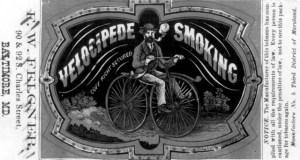Being in the media field I’m inundated with content discussing Social Media. Social this. Social that. Perhaps this is why Ad Age’s Matt Jones’ article “Why I Hate Social Media” grabbed my attention. Here is an excerpt:
People are interesting. Ideas are interesting. Stories are interesting. Real stuff is interesting. Brands are interesting (or, at least, some of them are). Even ads can be interesting. But media? Media just connects those things. It’s a conduit. Media is not interesting. Not even the “social” kind.
He’s right of course. The only people who really care about the developments in social media are the people making the developments. Yet the mainstream media, me and my peers, and brand marketers everywhere seem to perpetually be drawn to the discussion of the thing rather than how to make people, ideas, and stories interesting.
Part of the problem is media insiders DO find these stories interesting. The collapse of long revered brands, the rise of other brands, the guerilla warfare of platforms looking to outsmart their competitors IS interesting on one level.
The problem is it creates an artificial distinction between US and THEM. To debate the validity and longterm viability or Twitter misses the fact that Twitter’s long term existence doesn’t really matter as much as the ability to share, distribute, and openly harness an API to create meaningful applications which will undoubtably continue regardless of Twitter’s future.
Media hasn’t become social. It always was. I talked about the latest Dukes of Hazzard episode with anyone who would listen in 1980. My mother sent me newspaper clippings all the through my college career (for example – don’t use Bean0, it is made with penicillin! [I’m alergic.]) The difference now is that media is social with SCALE.
 I was just at a conference for PR/communications/advertising educators on new media hosted by
I was just at a conference for PR/communications/advertising educators on new media hosted by 

